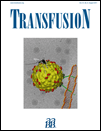A randomized clinical trial comparing granulocyte–colony-stimulating factor administration sites for mobilization of peripheral blood stem cells for patients with hematologic malignancies undergoing autologous stem cell transplantation
Supported by the Clinical Trials and the Biostatistics and Biomedical Informatics Shared Resources of the Winship Cancer Institute (NCI 5P30CA138292-02).
Abstract
BACKGROUND: A study was undertaken to investigate whether granulocyte–colony-stimulating factor (G-CSF) injection in lower adipose tissue–containing sites (arms and legs) would result in a lower exposure and reduced stem cell collection efficiency compared with injection into abdominal skin.
STUDY DESIGN AND METHODS: We completed a prospective randomized study to determine the efficacy and tolerability of different injection sites for patients with multiple myeloma or lymphoma undergoing stem cell mobilization and apheresis. Primary endpoints were the number of CD34+ cells collected and the number of days of apheresis. Forty patients were randomly assigned to receive cytokine injections in their abdomen (Group A) or extremities (Group B). Randomization was stratified based on diagnosis (myeloma, n = 29 vs. lymphoma, n = 11), age, and mobilization strategy and balanced across demographic factors and body mass index.
RESULTS: Thirty-five subjects were evaluable for the primary endpoint: 18 in Group A and 17 in Group B. One evaluable subject in each group failed to collect a minimum dose of at least 2.0 × 106 CD34+ cells/kg. The mean numbers of CD34+ cells (±SD) collected were not different between Groups A and B (9.15 × 106 ± 4.7 × 106/kg vs. 9.85 × 106 ± 5 × 106/kg, respectively; p = NS) after a median of 2 days of apheresis. Adverse events were not different between the two groups.
CONCLUSION: The site of G-CSF administration does not affect the number of CD34+ cells collected by apheresis or the duration of apheresis needed to reach the target cell dose.




